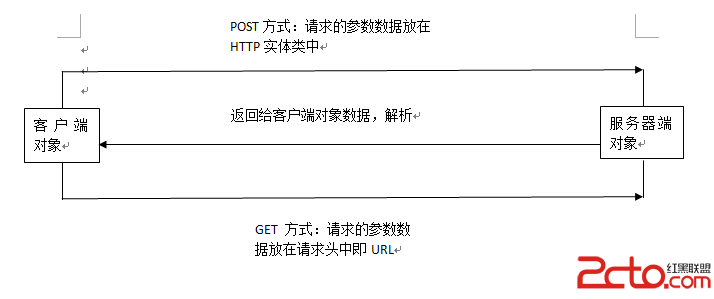編輯:關於Android編程
最近做一個項目,其中涉及到文件的上傳和下載功能,大家都知道,這個功能實現其實已經爛大街了,遂、直接從網上蕩了一堆代碼用,結果,發現網上的代碼真是良莠不齊,不是寫的不全面,就是有問題,於是自己重新整理了一番,把它們發出來,希望更多人能受用。
文件上傳
通過org.apache.commons.httpclient.HttpClient來實現文件上傳,該jar包可以直接從網上所搜、下載。
/**
* @param mContext 上下文
* @param targetUrl 文件上傳地址
* @param filePath 文件路徑
*/
public void uploadFile(final Activity mContext, String targetUrl, final String filePath) {
System.out.println("targetUrl: " + targetUrl + " filePath: " + filePath);
if (TextUtils.isEmpty(filePath)) {
Toast.makeText(mContext, "文件不存在", Toast.LENGTH_SHORT).show();
return;
}
final PostMethod filePost = new PostMethod(targetUrl) {//這個用來中文亂碼
public String getRequestCharSet() {
return "UTF-8";
}
};
try {
final HttpClient client = new HttpClient();
File file = new File(filePath);
if (file.exists() && file.isFile()) {
long fileSize = file.length();
if (fileSize >= 5 * 1024 * 1024) {
Toast.makeText(mContext, "文件不得大於5M", Toast.LENGTH_SHORT).show();
return;
}
} else {
Toast.makeText(mContext, "文件不存在", Toast.LENGTH_SHORT).show();
return;
}
// 上傳文件和參數
Part[] parts = new Part[]{new CustomFilePart(file.getName(), file),
new StringPart("filename", file.getName(), "UTF-8")};
filePost.setRequestEntity(new MultipartRequestEntity(parts, filePost.getParams()));
new Thread(new Runnable() {
@Override
public void run() {
int statuscode = 0;
try {
statuscode = client.executeMethod(filePost);
} catch (IOException e) {
e.printStackTrace();
}
final int finalStatuscode = statuscode;
mContext.runOnUiThread(new Runnable() {
@Override
public void run() {
if (finalStatuscode == HttpStatus.SC_OK) {
Toast.makeText(mContext, "上傳成功", Toast.LENGTH_SHORT).show();
} else {
Toast.makeText(mContext, "上傳失敗", Toast.LENGTH_SHORT).show();
}
}
});
}
}).start();
} catch (Exception ex) {
ex.printStackTrace();
}
}
HttpClient的使用,常常會遇到亂碼問題,我們主要在兩個地方解決亂碼問題:
•復寫PostMethod 的getRequestCharSet,指定請求編碼
final PostMethod filePost = new PostMethod(targetUrl) {//這個用來中文亂碼
public String getRequestCharSet() {
return "UTF-8";
}
};
•自定義FilePart,指定請求參數編碼
/**
* 解決中文文件名亂碼
*/
public class CustomFilePart extends FilePart {
public CustomFilePart(String filename, File file)
throws FileNotFoundException {
super(filename, file);
}
protected void sendDispositionHeader(OutputStream out) throws IOException {
super.sendDispositionHeader(out);
String filename = getSource().getFileName();
if (filename != null) {
out.write(EncodingUtil.getAsciiBytes(FILE_NAME));
out.write(QUOTE_BYTES);
out.write(EncodingUtil.getBytes(filename, "UTF-8"));
out.write(QUOTE_BYTES);
}
}
}
使用CustomFilePart添加參數:
Part[] parts = new Part[]{new CustomFilePart(file.getName(), file),
new StringPart("filename", file.getName(), "UTF-8")};
filePost.setRequestEntity(new MultipartRequestEntity(parts, filePost.getParams()));
文件下載
通過HttpURLConnection下載文件。
/**
* @param urlStr 文件地址
* @param path 文件保存路徑
* @param fileName 文件名
* @return 文件的絕對路徑
*/
public String downFile(String urlStr, String path, String fileName) {
InputStream inputStream = null;
String filePath = null;
try {
FileUtils fileUtils = new FileUtils();
//判斷文件是否存在
if (fileUtils.isFileExist(path + fileName)) {
System.out.println("exits");
filePath = SDPATH + path + fileName;
} else {
//得到io流
inputStream = getInputStreamFromURL(urlStr);
//從input流中將文件寫入SD卡中
File resultFile = fileUtils.write2SDFromInput(path, fileName, inputStream);
if (resultFile != null) {
filePath = resultFile.getPath();
}
}
} catch (Exception e) {
e.printStackTrace();
} finally {
try {
if (inputStream != null)
inputStream.close();
} catch (IOException e) {
e.printStackTrace();
}
}
return filePath;
}
/**
* 根據URL得到輸入流
*
* @param urlStr
* @return
*/
public InputStream getInputStreamFromURL(String urlStr) {
HttpURLConnection urlConn;
InputStream inputStream = null;
try {
url = new URL(urlStr);
urlConn = (HttpURLConnection) url.openConnection();
inputStream = urlConn.getInputStream();
} catch (Exception e) {
e.printStackTrace();
}
return inputStream;
}
文件下載其實很簡單,說白了,就是通過HTTP獲取InputStream ,然後通過解析InputStream 並寫入到文件即可。
讀取Inputstream並寫入到SDCard。
/**
* 將一個InputStream裡面的數據寫入到SD卡中
*
* @param path 文件保存路徑
* @param fileName 文件保存的名字
* @param input 文件輸入流
* @return 文件
*/
public File write2SDFromInput(String path, String fileName,
InputStream input) {
File file = null;
OutputStream output = null;
try {
// 創建文件夾
createSDDir(path);
// 創建文件
file = createSDFile(path + fileName);
// 開啟輸出流,准備寫入文件
output = new FileOutputStream(file);
// 緩沖區
byte[] buffer = new byte[FILESIZE];
int count;
while ((count = input.read(buffer)) != -1) {
// 這裡,請一定按該方式寫入文件,不然時而會出現文件寫入錯誤,數據丟失問題
output.write(buffer, 0, count);
}
output.flush();
} catch (Exception e) {
e.printStackTrace();
} finally {
try {
output.close();
input.close();
} catch (IOException e) {
e.printStackTrace();
}
}
return file;
}
Inputstream寫入到sdcard卡中,有個很重要的地方,先看下OutputStream 的write方法:
我推薦使用第二個方法write(byte[] b, int off, int len) ,目的是為了避免數據丟失。所以寫文件代碼如下:
while ((count = input.read(buffer)) != -1) {
// 這裡,請一定按該方式寫入文件,不然時而會出現文件寫入錯誤,數據丟失問題
output.write(buffer, 0, count);
}
源碼地址:https://github.com/zuiwuyuan/Http_Uploader_Downloader
以上便是我整理的Android Http實現文件的上傳和下載方法,希望對更多的人有所幫助。
 android:SpannableString的應用,TextView中某些文字的點擊事件
android:SpannableString的應用,TextView中某些文字的點擊事件
各種的Span就是通過SpannableString來封裝樣式的,設置完Span之後需要將Span放入到SpannableString類中,然後SpannableStri
 Android客戶端請求服務器端的詳細解釋
Android客戶端請求服務器端的詳細解釋
Android客戶端請求服務器端的詳細解釋1. Android客戶端與服務器端通信方式:Android與服務器通信通常采用HTTP通信方式和Socket通信方式,而HTT
 android開發游記:RecycleView 實現復雜首頁布局三種方式
android開發游記:RecycleView 實現復雜首頁布局三種方式
做過電商類應用的朋友可能都會遇到一個比較頭疼的問題:復雜的首頁布局如何實現。參考百度糯米,美團,bilibili等應用,都會發現其首頁的布局相對復雜,例如下圖bilibi
 Android應用中使用SharedPreferences類存儲數據的方法
Android應用中使用SharedPreferences類存儲數據的方法
在Android系統中提供了多種存儲技術.通過這些存儲技術可以將數據存儲在各種存儲介質上.比如sharedpreferences可以將數據保存著應用軟件的私有存儲區,這些